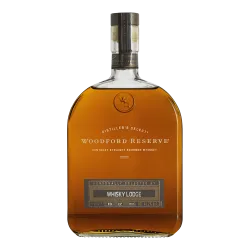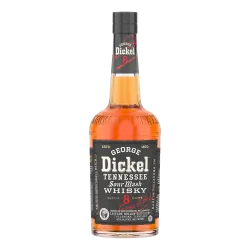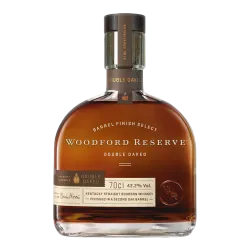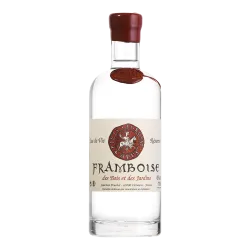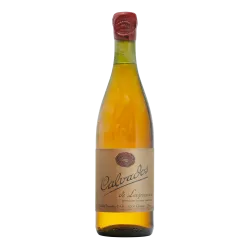Discover this great producer of versatile malt whiskies. This country has the largest number of distilleries in the world, offering a wide variety of profiles ranging from floral and dry to sweet and spicy, even with peaty and iodine notes.
There are 893 products.
Scottish Whisky: A Tradition of Excellence
Scottish whisky, also known as Scotch, is globally renowned for its authenticity and centuries-old craftsmanship. Every bottle tells a story shaped by Scotland’s climate, the purity of its water sources, and traditional distillation techniques.
Among the iconic Scottish distilleries, brands like Lagavulin—an essential reference for peated whiskies—Cardhu, prized for its smoothness and balance, and Glenfiddich, one of the world’s best-selling single malts, stand out.
But what truly distinguishes Scottish whisky from other types, such as refined and precise Japanese whisky or terroir-influenced French whisky aged in wine casks?
How to Recognize Scottish Whisky?
Often mistakenly spelled “Scottish whiskey” or “Scotch whiskey” (terms more accurately referring to Irish whiskey), Scottish whisky—or Scotch whisky—is protected by strict regulations guaranteeing its authenticity and quality.
A Scotch Whisky Aged at Least 3 Years
Every Scotch whisky must mature in Scotland for a minimum of three years in oak casks under 700 liters. This aging process develops complex aromas, influenced by the cask type, whether sherry (Macallan, Dalmore) or bourbon (Glenlivet, Aberlour).
Distilled in Copper Pot Stills
Single malts are distilled in copper pot stills, which purify the alcohol and refine the aromas. The shape of the stills affects the flavor: Glenmorangie’s tall stills yield floral whiskies, while Lagavulin’s shorter stills produce powerful ones.
Natural Ingredients Only
Scottish whisky uses only three natural ingredients:
-
Spring water, influencing the whisky’s profile (peaty at Springbank, pure at Glenfiddich).
-
Malted barley, sometimes dried over peat for a smoky flavor (Laphroaig, Ardbeg).
-
Yeast, essential for fermentation and aroma development.
Strict Scotch Whisky Regulations
Scotch whisky must comply with:
-
Minimum aging of 3 years in oak casks in Scotland.
-
Minimum alcohol content of 40%.
-
No additives except optional caramel coloring (E150a).
-
Distillation and aging exclusively in Scotland.
This rigorous framework sets Scottish whisky apart from other styles like precise and harmonious Japanese whisky, wine-cask-influenced French whisky, or bourbon, aged in new barrels for vanilla and caramel notes.
Scottish Whisky: An Inimitable Craft
Whether you prefer a peated Islay whisky, an elegant Speyside single malt, or a balanced blend, Scottish whisky embodies a unique tradition and diversity.
Iconic Scottish Whisky Distilleries
Scotland is the birthplace of whisky, boasting over 150 distilleries across the country. Each production region has its own style and characteristics, shaped by climate, water, and distillation methods. Some distilleries have become institutions, producing world-renowned single malts.
1. Speyside: Whisky of Finesse and Elegance
Located in northeast Scotland, Speyside has the highest concentration of distilleries. Its whiskies are often fruity, soft, and elegant, with notes of honey, vanilla, and dried fruit.
-
Macallan: Famous for sherry cask aging, offering rich aromas of dried fruit, spices, and chocolate.
-
Glenfiddich: One of the world’s best-selling single malts, known for its fruity profile and accessibility, especially the 12-year-old.
-
Cardhu: A historic distillery prized for its balanced and smooth single malts, perfect for whisky beginners.
-
Aberlour: Known for sherry cask maturation, offering rich whiskies with chocolate, caramel, and spice notes.
2. Islay: The Kingdom of Peated Whisky
Islay, off Scotland’s west coast, is famous for powerful, peated whiskies with marine, smoky, and iodine aromas.
-
Lagavulin: The ultimate peated whisky reference; the 16-year-old is a classic, blending smoky intensity with aromatic depth.
-
Laphroaig: One of the most medicinal and smoky whiskies, with seaweed and salt notes, divisive but beloved by peat enthusiasts.
3. Highlands: Diversity and Strength
Covering much of Scotland, the Highlands produce a wide range of styles from robust and spicy to softer and fruitier whiskies.
-
Glenmorangie: Renowned for wine cask finishes, including the Nectar d’Or aged in Sauternes casks for a sweet, pastry-like touch.
-
Dalmore: A luxury distillery producing woody, opulent whiskies often aged in sherry casks, such as the 18-year-old Dalmore.
-
Oban: A perfect balance between Speyside’s softness and Islay’s maritime character; the 14-year-old is a classic.
4. Lowlands: Light and Gentle Whiskies
The Lowlands, in southern Scotland, are known for lighter, floral, and cereal-driven whiskies—ideal for whisky introductions.
-
Auchentoshan: Famous for triple distillation, producing refined, delicate whiskies.
-
Glenkinchie: Near Edinburgh, offering fresh and floral whiskies perfect as an aperitif.
5. Campbeltown and Islands: Unique Maritime Flavors
Campbeltown, once the whisky capital of the world, now has three distilleries. The Scottish islands offer often peated whiskies influenced by the sea and peat.
-
Springbank (Campbeltown): Respected for artisanal, non-chill filtered whiskies bottled without artificial coloring.
-
Talisker (Isle of Skye): Its 10-year-old is famous for peppery, smoky, and iodine notes.
Types of Scottish Whisky
Scottish whisky is categorized by production and blending methods, regulated by the Scotch Whisky Association (SWA):
Single Malt Scotch Whisky
Made exclusively from malted barley, distilled at one distillery, and aged at least three years in oak casks. Known for complexity and unique character shaped by terroir and craftsmanship.
Single Grain Scotch Whisky
Contains malted barley plus other grains like corn or wheat. Distilled in column stills for a lighter, smoother spirit. Rarely bottled solo but often used in blends.
Blended Scotch Whisky
The most consumed whisky worldwide, blending single malt and single grain whiskies for a balanced, accessible flavor. Brands craft unique blends combining various distilleries.
Blended Malt Scotch Whisky
Formerly “vatted malt,” a blend of single malts from different distilleries, without grain whisky, creating complex and harmonious profiles.
Blended Grain Scotch Whisky
A rarer blend of single grain whiskies from multiple distilleries, generally lighter and smoother.
Scotch Whisky Aged in Special Casks
Beyond bourbon or sherry casks, some distilleries experiment with finishes in barrels that previously held other spirits.
How to Choose a Good Scottish Whisky?
-
Want a powerful, smoky whisky? Choose an Islay single malt like Lagavulin, Laphroaig, or Ardbeg.
-
Prefer a soft, fruity whisky? Try Speyside single malts such as Glenfiddich, Macallan, or Aberlour.
-
Looking for a balanced, approachable Scotch? Blended whiskies like Chivas Regal or Johnnie Walker fit the bill.
-
Craving originality? Explore whiskies aged in special casks, like Glenmorangie or Balvenie.
Scottish whisky offers an endless richness of flavors and styles. Whether novice or connoisseur, there is always a Scotch whisky made for you.
How to Taste Scottish Whisky?
Choosing the Right Glass
A tulip-shaped glass or Glencairn glass concentrates aromas and enhances the tasting experience.
Water or Not?
A few drops of water can unlock new aromatic layers, especially in high-proof whiskies. Ice can mute flavors, so use with care.
Ideal Drinking Temperature
Typically enjoyed between 15 and 20°C, cooler temperatures may suppress aromas, while warmer temperatures can highlight alcohol over flavors. Whisky stones (granite or soapstone) chilled in the freezer offer a way to cool without dilution.
Comparing Whiskies
Refine your palate by comparing a peated whisky like Lagavulin with a fruity Glenfiddich or a wine-cask-finished Glenmorangie Nectar d’Or.
Create the Perfect Tasting Setting
A calm environment, a comfortable chair, and a tasting notebook enhance the experience. Pair with dark chocolate or aged cheese for added pleasure.
Scottish whisky is more than a drink: it’s heritage, art, and a tradition passed down through centuries. With incredible stylistic

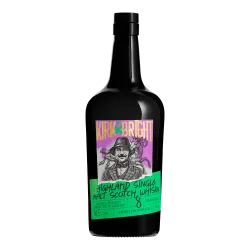

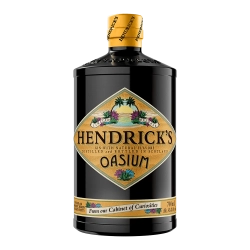

.png)

